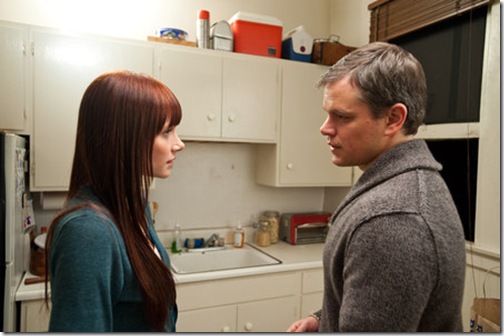A few years ago, when Clint Eastwood directed Flags of Our Fathers and Letters From Iwo Jima – his sobering companion films about World War II, told evenhandedly from both sides of the conflict – it seemed the best time to reflect on Eastwood’s directorial canon.
At the time, I analyzed Eastwood’s evolution from a two-dimensional icon of Western-movie chauvinism and hard-right vigilante justice to a behind-the-camera artist with profound sensitivities toward the socially outcast and whose complex, ever-shifting political leanings belie his personal conservatism more than reinforce it.
But at least in his style, Eastwood remains to this day a conservative filmmaker – a classicist more than a modernist and a craftsman more than an auteur, whose invisible directorial hand preserves an old-fashioned Hollywood tenderness (or mawkishness, per his detractors). In an era of 3D ubiquity, CG showmanship and style-over-substance film-school maverickism, the Eastwood style of classical restraint is a vanishing art.
Yet it’s one that keeps me continually absorbed by even his lesser, flawed efforts of late – like Changeling and Gran Torino – and when the 80-year-old director eventually dies or, less likely, retires, there won’t by anyone left to carry the torch.
And though Eastwood is not slowing down his productivity just yet – he’s currently in pre-production for a J. Edgar Hoover biopic starring Leonardo DiCaprio – his touching latest release, Hereafter, is an acceptance of both the inevitable and the spiritual from an artist in his twilight years. The film finds the director peering through clouds of death for the silver linings of hope and rebirth, and it’s impossible not to read Hereafter as a meditation on mortality. It discovers a deeply rooted, if nondenominational, faith in an afterlife that may upset the apple cart of supposedly godless Hollywood liberalism – which is to say it’s the next confounding step in Eastwood’s chameleonic political-cinematic trajectory.
The presence of God’s machine in the events leading up to the characters’ investigation of the afterlife may be less easily acceptable for believers than the film’s more spiritually rosy conclusions, and the random tragedies that incite this story implicitly confront a frequent problem for theists: Why does God kill innocent people? The film opens on an idyllic beachside town, where a tsunami will obliterate hundreds of thousands of people within seconds. One of the few survivors will be French television reporter Marie LeLay (Cecile de France), whose near-death experience in the disaster will profoundly affect her life going forward.
Meanwhile, in England, a young boy loses his twin brother to another random accident brought on by a wrong-place, wrong-time confrontation with some local bullies. His attempts to communicate with his recently deceased kin lead him to a number of sham psychics. Meanwhile in the United States, Matt Damon plays George Lonegan, a honest-to-goodness psychic whose ability to communicate with ghosts developed from a childhood illness. A factory worker with penchants for Italian cuisine and Charles Dickens, Lonegan has given up his paranormal career after it played havoc on his personal life.
The three principal characters will circuitously coalesce in the final act, which I won’t
spoil. Suffice it to say that Hereafter is one of the most sensitive films ever made about the most sensitive subjects of our, or anyone’s time – life, death, faith, forgiveness, acceptance. Yes, the violins may weep at the appropriate times, and in lesser hands, this material could have been a cornball weepie.
But Eastwood’s hands are not lesser, and Hereafter is one of the year’s most exquisitely calibrated and emotionally unforgettable experiences.
Studio: Warner Brothers; Rating: PG-13; Director: Clint Eastwood; Cast: Matt Damon, Cecile de France, Frankie McLaren, George McLaren, Thierry Neuvic, Bryce Dallas Howard, Jay Mohr; Opens: Friday; Venue: Most commercial houses
